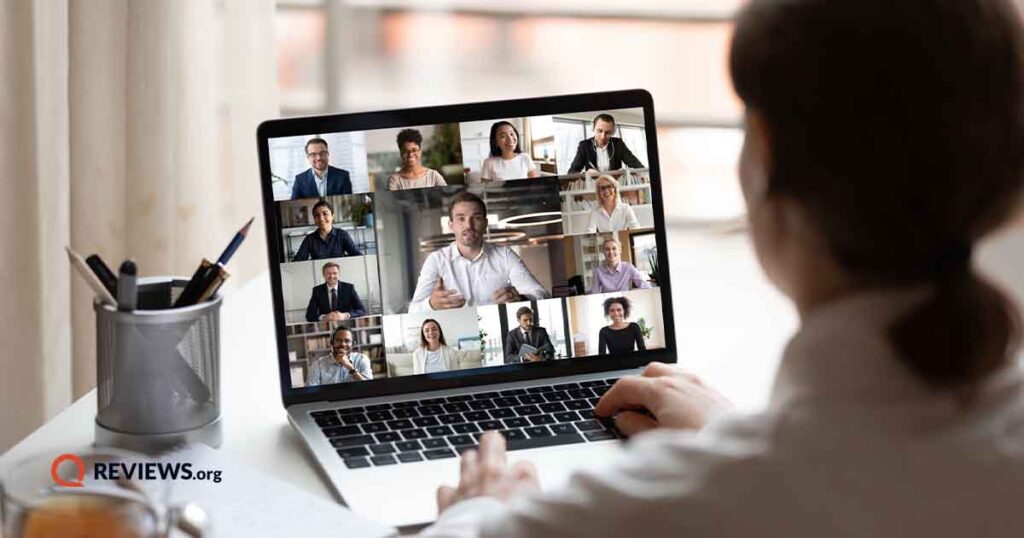If you’re in the middle of financial struggle, you have some internet assistance options
How to Get Low-Cost Internet Assistance
Once considered a luxury, the internet is now more of a necessity. You need online access to apply for jobs, go to school, buy and sell property, and sometimes even date or make friends.
Many Americans have found low-cost internet through government assistance programs like the Affordable Connectivity Program and the Lifeline Program; however, the ACP's loss of funding plus rising internet costs leave limited options for those who rely on these programs for connectivity.
Whether you're currently eligible for the Affordable Connectivity Program but unsure where else to seek assistance or facing the loss of your ACP benefits soon, there are still a bunch of options available for low-cost internet. This guide will show you ways to get low-cost internet access so you won't be left behind.
Guide to getting low-cost internet assistance:
Honest reviews written by real people
Why should you trust Reviews.org? Because we are real people writing these reviews, and we talk to real people in order to research them.
Our brand partners do not see or approve our articles before they are published, but we make a commission if you click an affiliate link. Learn more about Reviews.org on our About Us page.
The Affordable Connectivity Program is on pause–for now
Since 2021, 22 million households in the United States have benefitted from monthly discounts ranging from $30 to $75 through the federal Affordable Connectivity Program (ACP). However, the ACP is now out of funding, and since the beginning of May, recipients have only received partial benefits. Not all is lost, though. There are legislative efforts that may save the program, and you can find plenty of other options for getting low-cost internet in the rest of this piece.
New funding could be slated for the ACP soon
Following the expiration of the Affordable Connectivity Program (ACP), two bills have been introduced to save the program. The Affordable Connectivity Program Extension Act seeks to provide $7 billion into the program's funds if passed, potentially providing a lifeline for low-income households.
The Promoting Affordable Connectivity Act, introduced on May 1 by Pennsylvania Senator John Fetterman, proposes integrating the ACP into the Universal Service Fund (USF) for consistent funding. This second bill presents a more permanent solution than the Extension Act—it’s designed to finance the ACP without increasing costs for consumers, making broadband and edge service providers responsible for funding instead.
Many who have been following the ACP closely are optimistic about Fetterman’s new bill. “There is plenty of precedent for making it part of the Universal Service Fund because that’s how the Lifeline Program is funded,” says Peter Christiansen, a staff writer at HighSpeedInternet.com who has been following the developments closely.
The final vote on the Extension Act is still pending, but in the meantime, you can share your support for the bill with your Congressional representative. As for Fetterman’s new Promoting Affordable Connectivity Act, we’re eager to see how it will be received by the Senate.
Looking for an alternative to the Affordable Connectivity Program?
Luckily, there are still a bunch of options for low-cost internet out there. If you used to benefit from the ACP and need to downsize your internet plan or change providers, we've got all the details on available government assistance programs as well as low-income internet packages available directly from internet providers.
The Lifeline Program
The FCC offers more programs than just the ACP—it also offers the Lifeline Program, administered by the Universal Service Administrative Co.
Lifeline was created in 1985 to ensure low-income households could access phone service. Today, the Lifeline Program offers both phone and internet assistance, but we'll focus on the internet. Here’s how that works.
Lifeline benefits
The Lifeline Program offers up to $9.25 a month in benefits for eligible, low-income households.
For folks who live on Tribal lands, Lifeline offers even more discounts: up to $34.25 for internet and up to $100 toward first-time installation fees. This map of eligible lands will show whether your home qualifies.
Lifeline Program eligibility
With Lifeline, household income needs to be at or below 135% of the Federal Poverty Guidelines, or your household must participate in one of these programs:
- FPHA
- Medicaid
- NSLP
- SNAP
- Veterans Pension or Survivor Benefits
- WIC
How to sign up for Lifeline
The application process for the Lifeline Program is the same for all households. And unless you live in California, Oregon, or Texas, all you need to do is apply, print and mail an application, or contact your preferred internet company. Once approved, you can use your discount to sign up for internet service.
If you’re a Californian, Oregonian, or Texan, you must either call the internet provider or look up the application process on your state website.
Internet First
Internet First offers affordable high-speed internet access to low-income households in areas served by RCN, Wave, or Grande Internet.
If you could use low-cost and fast internet, Internet First is a great option.
Internet First benefits
Internet First offers up to 50Mbps for just $9.95 a month. So if you also qualify for Lifeline, the program will nearly cover your bill. Plus, Internet First waives all installation and activation fees. So the cost really is $9.95 a month.
Internet First eligibility
To apply for Internet First, you can’t have applied to the program in the last 60 days, and you need identification and proof of eligibility.
Proof of eligibility includes:
- Federal Pell Grant documentation (Colorado and Illinois only)
- LIHEAP eligibility letter
- Medicaid card or eligibility letter
- NSLP/Head Start participation documentation
- Public housing assistance documentation
- SNAP letter
- SSI eligibility letter
- TANF eligibility letter
- Tribal assistance eligibility letter
- Unemployment verification letter
- Veterans Pension Eligibility Determination letter
- WIC eligibility letter
You also need to live in eligible parts of these states/districts:
- California
- District of Columbia
- Illinois
- Indiana
- Maryland
- Massachusetts
- New York
- Oregon
- Pennsylvania
- Virginia
- Texas
- Washington
How to sign up for Internet First
You can apply for Internet First either online or through the mail. If you choose to mail your application, you can send the form to this mailing address:
Internet First
Quality Assurance Department
East Mountain Corporate Center
100 Baltimore Drive
Wilkes Barre, PA 18702
Low-Cost Internet Packages from individual providers
In addition to or instead of these widespread programs, you can often get assistance through an individual internet service provider.
Here are some providers that offer low-cost internet assistance. Just make sure you read the terms of service when you sign up because some services may have hidden overage fees, rental costs, or long-term contracts.
Cox Connect2Complete
Cox offers internet service for low-income K–12 students through a program called Connect2Complete. The service costs $9.95 a month, is self-installed, and includes a Wi-Fi modem.
Eligibility requires at least one child in kindergarten through 12th grade and household use of at least one government assistance program.
MediaCom Connect2Complete
MediaCom also offers discounted service through Connect2Complete, but the qualifications are somewhat stricter.
MediaCom requires you to meet the following requirements for enrollment:
- At least one child in K–12
- At least one child qualifies for NSLP
- No current MediaCom contract
- No MediaCom subscription in the last 90 days
- No outstanding MediaCom bill or unreturned equipment
On the flip side, though, you get unlimited data with MediaCom, alongside other perks like no rental fees and an included modem.
Optimum Advantage
Optimum’s low-income household internet offering, Optimum Advantage, is $15 a month for 50Mbps.
To qualify, you must meet one of these qualifications:
- Your household qualifies for NSLP
- Your household contains a New York City resident attending a New York City public school
- You’re 65+ and on SSI
- You’re a veteran receiving state or public assistance
You must also not be an Optimum customer from the last 60 days or have an outstanding Optimum bill; you must have a valid U.S. postal address.
Spectrum Internet® Assist 50Mbps
Users in California can get low-cost internet through Spectrum Internet Assist if someone in your household uses one of these programs:
- NSLP
- CEP of the NSLP
- SSI
While Spectrum Internet Assist has no data limits and doesn’t require a contract, it’s not a Wi-Fi connection. (Which means it’s probably some kind of Ethernet connection that you plug directly into.)
If Wi-Fi’s a must-have for you, it’ll cost $5 extra every month to add Spectrum Advanced WiFi to your setup.
Verizon Forward Program
Verizon calculates its low-cost internet prices differently than other programs.
Other programs have a special low-cost internet package to which you can also apply for a government benefit. Verizon Forward doesn’t have unique low-income offerings—it simply offers discounts on its regular Verizon plans (and there are a lot of them).
The Verizon Forward Program offers discounts on 5G Home, 5G Home Plus, LTE Home, LTE Home Plus, or Fios 300 Mbps, 500 Mbps, 1 Gig, or 2 Gig residential Internet plans. And right now, new Verizon Internet customers who register for Verizon Forward before September 3 can get free internet for six months.
To qualify for Verizon Forward, one person per household must have qualified for a Pell Grant in the last year or currently qualify for a government assistance program like WIC or SNAP.
Xfinity Internet Essentials
You could be eligible for Xfinity’s low-income program, Internet Essentials.
But keep in mind, unlike other providers’ low-cost internet options, Xfinity requires year-long contracts.
Data effective 02/26/2024. Offers are subject to change.
FAQ
There’s a lot to know about this topic, so we’ve provided a little extra info to keep you on the up and up.
- FPHA: Federal Public Housing Assistance
- HUD: Housing and Urban Development's public housing programs
- LIHEAP: Low-Income Home Energy Assistance Program
- NSLP: National School Lunch Program
- CEP of NSLP: Community Eligibility Provision of the National School Lunch Program
- SNAP: Supplemental Nutrition Assistance Program
- TANF: Temporary Assistance for Needy Families
- WIC: Women, Infants, and Children Program
- SSI: Supplemental Security Income
ConnectHome USA is a “digital inclusion program” offered through the U.S. Department of Housing and Urban Development.
If you live in a HUD-assisted community, CHUSA may be available. The program brings internet service, devices, and skills to at-need households so they stay caught up in digital literacy.
Some internet affordability programs also help pay for a device to get online. But if those aren't an option, you can always use a local library's free computers and internet service.
Yes, in many cases. A lot of these benefits are designed to stack.
The discounted or free internet you get through assistance programs can be slow in some cases. If you want high-speed internet, your options will be more limited.
The EBB was the precursor to the ACP; however, the Affordable Connectivity Program ends in February 2024. It also helped low-income households access home internet service alongside a desktop computer, laptop, or tablet.
Related Articles



